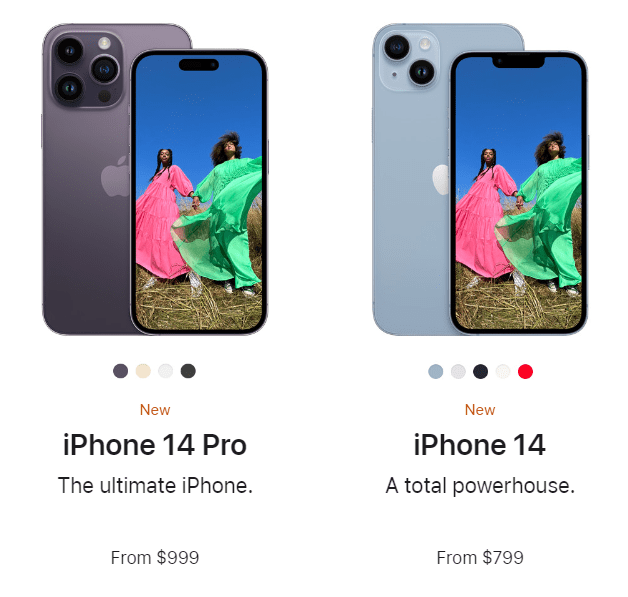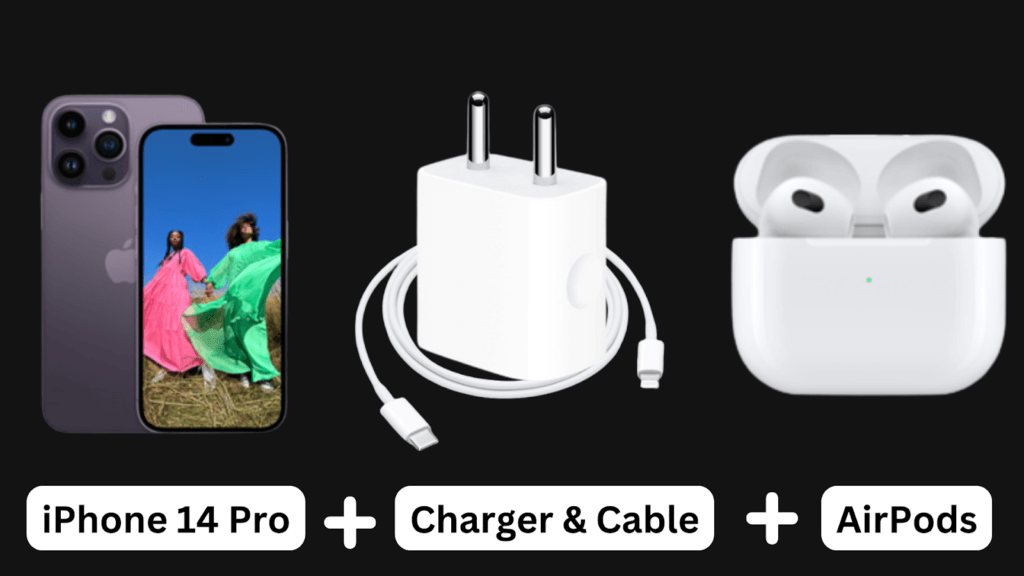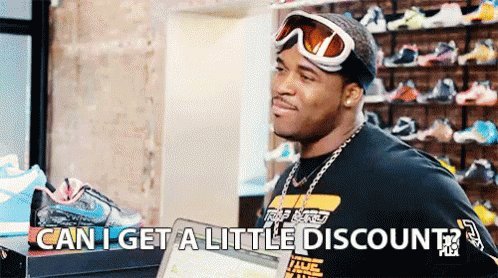When I started working on this upselling and cross-selling blog, I didn’t know a single thing about it.
But as I researched it, I remembered one cross-selling incident that happened to me.
A few months ago, I had gone shopping for some t-shirts.
I went inside a store and told the sales representative what I wanted to purchase.
Then he showed me some t-shirts and from those, I decided to purchase two.
Once I was done with that, the sales rep encouraged me to purchase a pair of jeans that goes well with the t-shirts.
And I ended up purchasing 2 pairs of jeans along with the 2 t-shirts.
Me (in my mind) to the sales representative:

Upselling and cross-selling are strategies used to sell more with less time, less money, and fewer resources. And they are used in every industry like banking, eCommerce, software, retail, and you name it.
In this blog, I will break down how upselling and cross-selling work. Let’s go.
What is upselling?
Upselling is a sales strategy used to encourage customers to purchase a similar product with more features than the customer’s original choice.
Basically, the seller offers customers a higher-end version of the product they are interested in and convinces them how that product will better fulfil their needs.
According to HubSpot research, 88% of sales representatives try to upsell their customers and 49% of them say that understanding customer needs and goals is a key strategy. Source: HubSpot
Now, upselling involves educating the customer by highlighting the benefits, differences, and attractive discounts available on the product.
It’s like comparing the primary product with the higher-end version product and showing the additional features and specifications.
This strategy makes their purchase even better. Though the customer spends more than they intended to, they get a product better than they wanted.
This strategy is useful when the chances of buying the product are the highest.
Upselling is an effective strategy to sell more profitable products. And this would boost your sales as well as profits.
And this is a win-win situation for both sellers and customers. Sellers increase their average order value (AOV) and customers get a better product.
Average Order Value (AOV) - AOV is the average amount of money each customer spends per transaction.
Now, let me explain to you how this tactic works by giving an example of upselling.
Example of upselling
Now, imagine you work in an Apple Store as a sales representative. One customer visits the store to purchase the latest iPhone 14.
The customer has done basic research about iPhone 14 and wants to buy the same model.
But you ask the customer if they would like to check the iPhone 14 Pro with more features. Then you highlight all the specifications, features, and differences between the two models.

You convince the customer how the iPhone 14 Pro will be the best fit for the customer’s needs. And voila! The customer agrees to purchase the iPhone 14 Pro instead of the iPhone 14.
And that’s how upselling works my friend, by offering an upgraded or premium version of the product they wanted to buy.
Now, let’s move on to cross-selling, shall we?
(You: Of course, yes!)
What is cross-selling?
Cross-selling is convincing the customer to purchase additional or complementary products that work well with already purchased products.
It’s like pointing the customer to the products that they would have purchased anyways, but by showing them at the right time. This way a seller can ensure they make a sale.
According to McKinsey, cross-selling strategy can increase sales by 20% and profits by 30%. Source: McKinsey
In this strategy, the sales representative persuades the customer to purchase the primary product.
Once the purchase is done, the sales representative recommends additional, complementary, and relevant products that add value to the primary product.
Now, the main aim of the seller is to suggest the customer to buy additional products related to the primary product based on customer interest.
If a customer is exposed to relevant recommendations, they might buy more products from you and bring more sales to you.
The customers will trust you more if you cross-sell something that matches their needs. And customers will feel that you care about their interests.
Let’s understand this better with a cross-selling example.
Example of cross-selling
Let’s continue with the above example of the iPhone 14 Pro.
Now that the customer has agreed to purchase the iPhone 14 Pro, here’s your chance to suggest the relevant accessories.
If the customer is buying an iPhone for the first time, then you can offer the charger at a discounted price.
Ask the customer if they like to listen to songs; if yes, encourage them to purchase the AirPods and tell them how they would add value to their overall experience.

And this helps to increase the number of items sold and their total sales value.
Now that I have explained both strategies with examples, it’s time to understand the difference between upselling and cross-selling.
Difference between upselling and cross-selling
Before we go into details, let me make this clear:

The terms are often used interchangeably, but the process for each is different.
Objectives
In upselling, the main objective is to boost the AOV and net profits while making sure that the customer purchases the costlier product version.
And with cross-selling, the main objective is to increase the overall sales value by making relevant product suggestions that work well with the primary product.
How does it work?
In upselling, the sales representative’s job is to convince customers to purchase higher-end and costlier products.
But in cross-selling, the sales representative encourages customers to purchase other products relevant to their already purchased product.
Recommendation
When upselling, the sales representative recommends a product which is similar but with better features and specifications.
And while cross-selling, the sales representative recommends other relevant products that complement the primary product for better results.
Product
In upselling, the sales representative explains the benefits of the upgraded version. And the customer purchases a better version of the product by paying extra money.
And in cross-selling, the sales representative explains the benefits of the additional product. And the customer purchases additional products that add value to the primary product.
Importance of upselling and cross-selling
Growth in profits
According to a HubSpot survey, 72% of salespeople who upsell and 74% who cross-sell say that it drives their revenue up to 30%. Source: HubSpot
Growing your business doesn’t mean just retaining the customers, it is necessary to continue to increase your revenue from the existing customers.
Upselling and cross-selling increase your revenue and profits by selling higher-priced products and relevant products to a customer.
Now, tell me which business doesn’t want more money.
Better return on investment (ROI)
Getting new customers can turn out to be a costly affair. Upselling and cross-selling to your existing customers allow you to make profits quickly and receive a better return on investment.
And it also boosts marketing effectiveness at minimal added costs, which increases the marketing return on investment.
Increases customer lifetime value (CLV)
Upselling and cross-selling strategies will bring more sales and profits and contribute to increasing CLV.
You can increase the average CLV by offering a personalized experience to individual customers based on their interests.
Pro-tip: CLV is one of the types of customer experience metrics that’s essential for driving business growth.
Customer loyalty
Through upselling and cross-selling, you offer customers the products that they are interested in. This helps in building loyalty and a deeper relationship with your customers.
And customer loyalty will help you get more business through word-of-mouth marketing, which is absolutely free of cost.
Pro-tip: Building relationships with customers is one of the best sales strategies.
A happy customer is the best marketing.
Convenience and flexibility
Many customers don’t want to make a purchase from a new business.
When upselling and cross-selling, you offer your customers relevant products which are more convenient and offer the flexibility to purchase what they need.
Just like every coin has two sides, upselling and cross-selling have their advantages and disadvantages. Let’s take a look at them.
Advantages of upselling and cross-selling
1. Upselling and cross-selling require fewer marketing efforts and expenses.
2. It helps retain customers and encourages them to spend more money.
3. Both strategies create an environment of mutual benefit for customers and businesses.
4. Upselling allows customers to find better alternatives with a larger variety of products.

5. Cross-selling helps provide value-driven and similar products to customers,
Disadvantages of upselling and cross-selling
1. Upselling and cross-selling can be ineffective if it fails to generate sales.
2. If you try to cross-sell additional products, the customer might get annoyed and won’t make any additional purchases.

3. While upselling, the customer might feel forced to purchase a more expensive product.
4. Due to unsatisfied customers, you may see an increase in the number of product returns.
5. It could attract some wrong customers who are driven by impulse purchases and discounts.

The main intention behind upselling and cross-selling is obviously to boost revenue and profits. But it’s not only about money, it’s about providing real value to your customers.
And believe me, if you use both these strategies at the right time of the customer journey, you will see better results and satisfied customers.

FAQs
What are the main goals of upselling and cross-selling?
The main goals are to increase sales, revenue, and satisfy customer needs with better options.
When should you cross-sell a product?
Once a customer purchases a product, you can convince them to purchase additional products. Your timing is really important, and don’t try to push a product if the customer is not interested at all.
How does a good upsell make the customer feel?
If you understand what your customer wants and offer them relevant products, it will make their shopping experience delightful.
What are the best practices for cross-selling and upselling?
Suggesting too many products can create confusion.
So analyze your customer’s journey, ask them questions to identify and offer the right products, and demonstrate the product’s value.
And don’t forget to follow up with your existing customers.
Conclusion
Upselling and cross-selling strategies have been practiced for a long time.
The key to success in both strategies is to understand your customers and provide them with products that meet their needs.
Also, it provides maximum value to customers and increases revenue without spending a penny on marketing.
Both these strategies can be beneficial if done with proper customer analysis and planning.
And if you want to scale your business then you can’t ignore upselling and cross-selling to generate more sales.
So, are you already using or going to use both of these strategies in your business?
